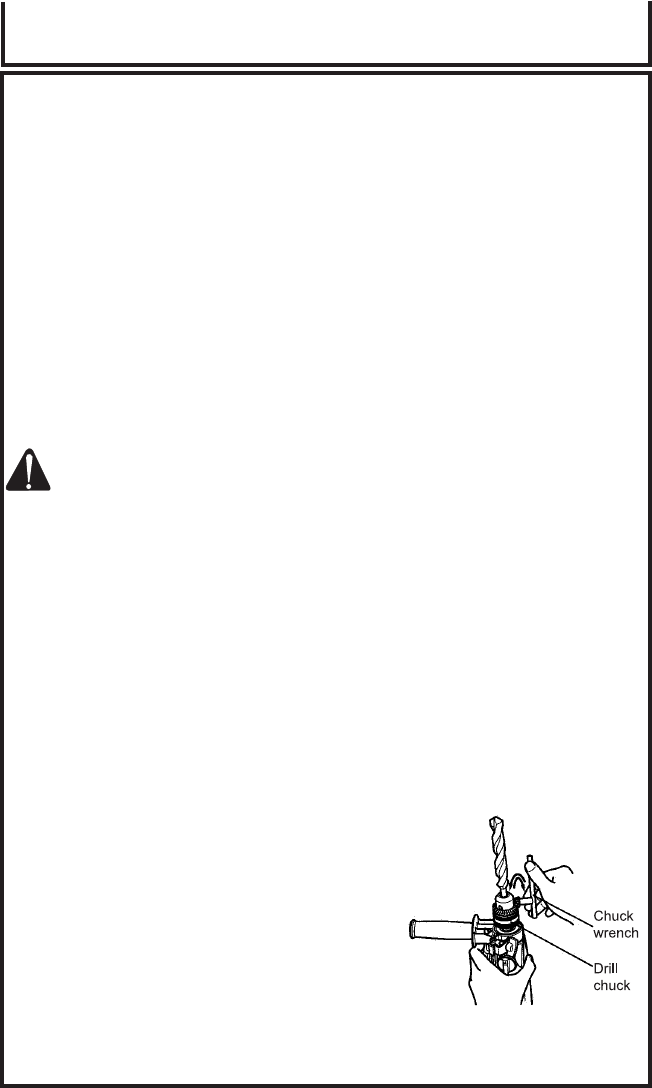
10 1/2-Inch Hammer Drill Operator's Manual
1. Power source:
Ensure that the power source to be utilized conforms to the power source require
ments specified on the product nameplate.
2. Power switch:
Ensure that the switch is in the OFF position. If the plug is connected to a
receptacle while the switch is in the ON position, the power tool will start operating
immediately and can cause serious injury.
3. Extension cord:
When the work area is far away from the power source, use an extension cord of
sufficient thickness and rated capacity. The extension cord should be kept as short
as practicable.
WARNING: DAMAGED CORD MUST BE REPLACED OR REPAIRED.
4. Check the receptacle
If the receptacle only loosely accepts the plug, the receptacle must be repaired.
Contact a licensed electrician to make appropriate repairs.
If such a faulty receptacle is used, it may cause overheating, resulting in a serious
hazard.
5. Confirming condition of the environment:
Confirm that the work site is placed under appropriate conditions conforming to
prescribed precautions.
6. Selecting the appropriate drill bit:
a. When boring concrete or stone, use a masonry drill bit.
b. When boring metal or plastic, use an ordinary metalworking drill bit.
c. When boring wood, use an ordinary woodworking drill bit. However, when
drilling 1/4" (6.5 mm) or smaller holes, use a metalworking drill bit.
7. Mounting and dismounting of the bit. (Fig. 2)
Fit the drill bit into the chuck and use the chuck
wrench to secure it, tightening the chuck by each
of the three holes in turn.
Operation
APPLICATIONS:
By combined actions of ROTATION and IMPACT: Boring holes in hard surfaces
(concrete, marble, granite, tiles, etc.)
By ROTATIONAL action: Boring holes in metal, wood and plastic.
PRE-OPERATION:
(Fig. 2)


















